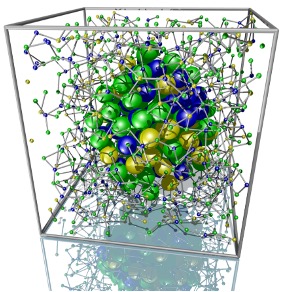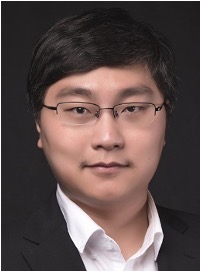Materials Design for Phase-change Memory and Neuro-inspired
Computing
Wei Zhang*
Xi’an Jiaotong University, Xi’an, 710049, China
ABSTRACT: The global demand for
data storage and processing has increased exponentially in recent decades. To respond
to this demand, research efforts have been devoted to the development of
non-volatile memory technology that combines fast operation speed with
persistent storage when power off. Chalcogenide phase-change materials (PCMs)
are leading candidates for such application, and have become technologically
mature with recently released competitive products, i.e. 3D Xpoint.
Phase-change memory utilizes the large contrast in electrical resistance
between the amorphous and crystalline phase of PCMs to encode data. Yet, the
multilevel capability of PCMs enables efficient emulations of artificial neural
network for neuro-inspired computing that unifies computing with storage in
memory arrays. The flagship PCM is Ge2Sb2Te5,
but the intrinsic stochasticity of nucleation and spontaneous glass relaxation
at room temperature prevents further improvement on the computing and power
efficiencies of phase-change devices. In this talk, I will focus on the
mechanisms of the crystallization dynamics and aging relaxation of PCMs by
discussing structural and kinetic experiments, as well as ab initio atomistic
modelling and calculations. Based on the knowledge gained at the atomic level,
potential routes to improve the crucial parameters, such as switching speed,
drift coefficient, as well as cycling endurance of phase-change devices are
depicted by ab initio materials design. Two designed new materials, namely, the
Sc0.2Sb2Te3 alloy that breaks down the switching
time to subnanosecond regime and the TiTe2/Sb2Te3
superlattice that resolves the resistance drift issue, will be discussed in
detail.

Fig. 1 Crystallization of PCM.
Keywords: Materials design; first-principle simulation; phase-change memory; neuro-inspired computing.

Wei Zhang obtained his PhD and did his postdoctoral research at RWTH Aachen University, Germany. He is currently a full professor and the dean assistant at school of materials science and Engineering at Xi’an Jiaotong University. He has been working on phase-change memory materials for more than 10 years, and has published more than 50 related research articles, including 3 Science and 2 Nat. Mater. papers.